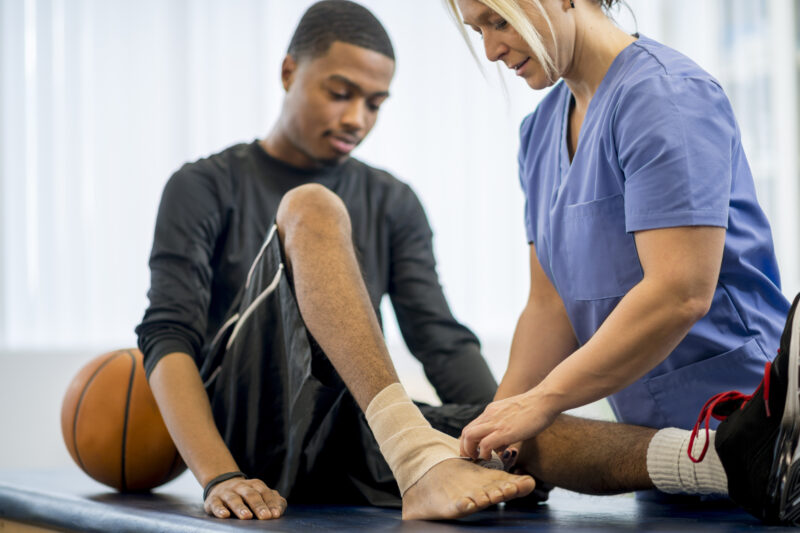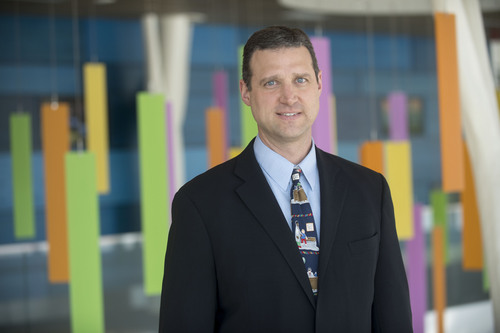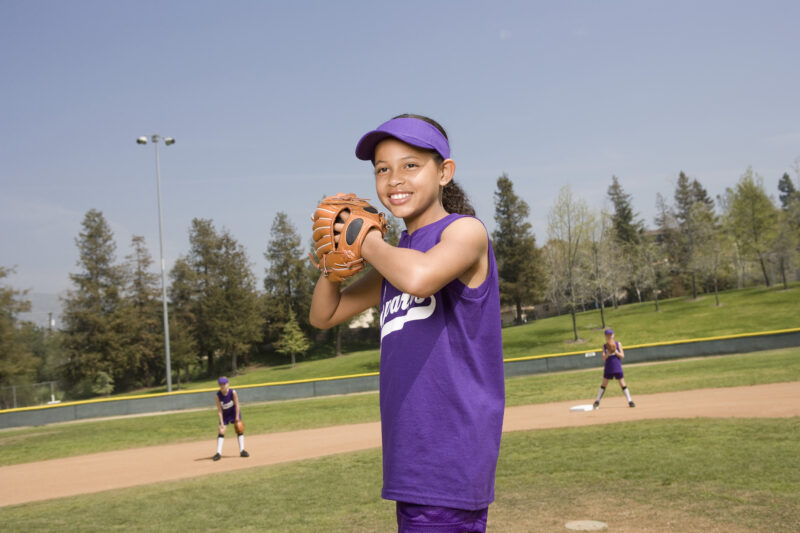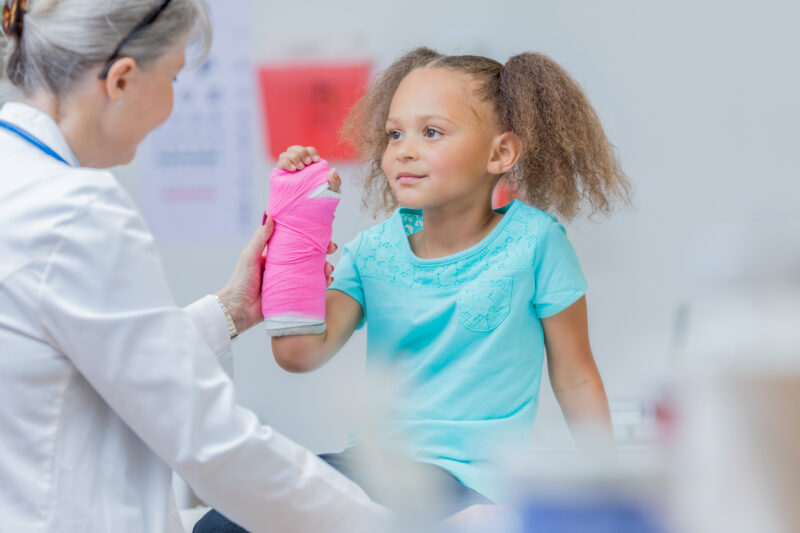
Growth plate injuries put kids at higher risk for arthritis in the affected area. That’s why it’s important to have growth plate injuries evaluated by a medical provider.
If you’re familiar with the lyrics to the children’s song, Dem Bones, then you probably already know the knee bone is connected to the thigh bone. But did you know the thigh bone is one of the 4 long bones in the body (along with the bones in the lower leg/shin and upper arm and forearm) that has a growth plate near the end of it?
Growth plates are areas of cartilage at the ends of bones that are key to a child’s ability to grow. Once a growth plate hardens into solid bone it closes forever – meaning the child’s growth is complete. Typically, that happens around age 14 for girls and age 16 for boys, although it can vary widely.
“When the skeleton is forming it begins as cartilage and goes through a process of ossification to turn into bone,” says orthopedic surgeon Dr. Mark Adamczyk. “Growth plates are organized in a way that cells are either resting, growing quickly, or changing into bone.”
So, what happens when growth plates become damaged or injured?

Dr. Mark Adamczyk
“Most growth plate fractures heal on their own and don’t affect future growth. Broken arms and wrists are incredibly resilient,” Dr. Adamczyk says. “However, injuries to joints, like the knee (end of the thighbone), have a very high rate of closing and creating a difference in the length of the legs or growing at an angle causing a person to become knock-kneed or bow legged.”
Injuries to the joints also put kids at higher risk for arthritis in the affected area. That’s why it’s important to have growth plate injuries evaluated by a medical provider.
A rule of thumb for who to see:
- Go to the emergency department for acute injuries that cause extreme pain, look bent or affect the person’s ability to walk or use the affected limb.
- See an orthopedic specialist for acute injuries that occurred within the last month and cause pain, swelling or trouble moving or using the injured body part.
- See a sports medicine specialist for a nagging sports-related injury that occurred 4-6 weeks ago or beyond.
Dr. Adamczyk says the length of time it takes a growth plate injury to heal depends on the location of the injury and the age of the child.

Little League elbow is an overuse injury to the elbow caused by repetitive throwing. Most cases happen in pitchers, but any young athlete who throws a lot can get the condition.
“Younger kids tend to heal faster than teens,” he says. “If the bones are lined up appropriately, the body will heal itself when you immobilize the injury with a cast or a sling.”
For bones that aren’t lined up, the orthopedic team at Akron Children’s uses minimally invasive techniques like closed reduction percutaneous pinning (CRPP) which can be done without an incision to help immobilize the bone.
“We don’t want to cause a second injury to the bone, so we use a lot of temporary pins rather than permanent screws and plates to hold the bone in place while it heals,” Dr. Adamczyk says.
Irritation to the growth plate can also be caused by overuse injuries, which are often seen in athletes who play the same sport year-round. Some of the more common overuse injuries that involve growth plates include:
“When kids use the same movements repetitively and never give themselves a break, they are prone to overuse injury,” says Dr. Adamczyk. “If they don’t allow their bodies time to heal, they risk re-injury, which we see a lot in athletes who specialize in one sport.”

Most growth plate fractures heal on their own and don’t affect future growth. Broken arms and wrists are incredibly resilient.
There is no rule of thumb for how long a person needs to heal.
“The area needs to strengthen and gain mobility,” says Dr. Adamczyk. “Generally, that happens once a child or teen can run without limping or perform pushups with a healed wrist or arm.”
Akron Children’s has over 13 surgeons and advanced practice providers who are experts in orthopedic injuries and offer same day appointments for evaluations of fractures and growth plate injuries. To find a location near you, visit akronchildrens.org.










